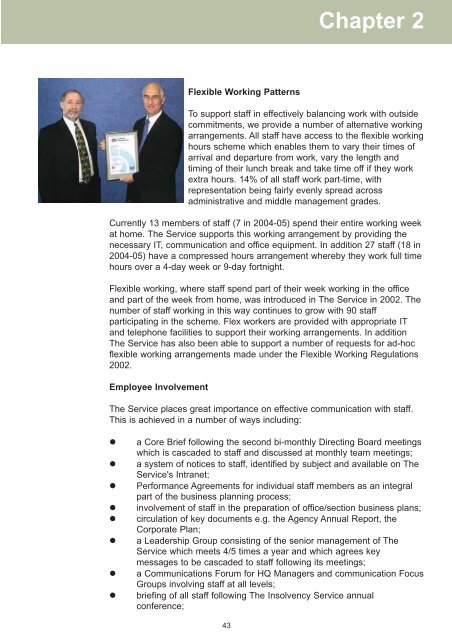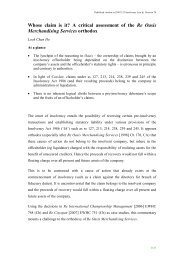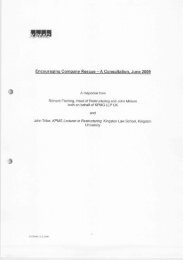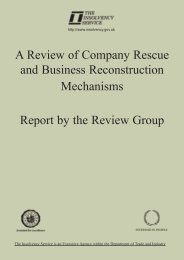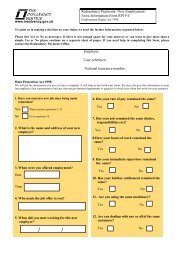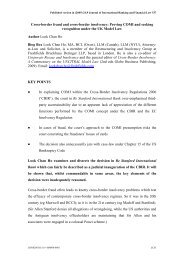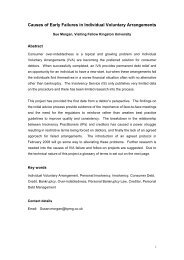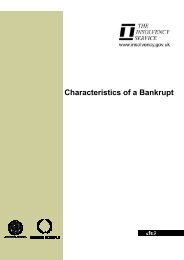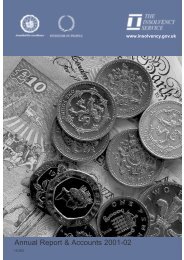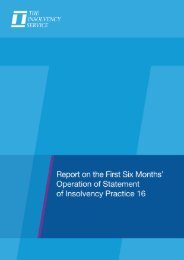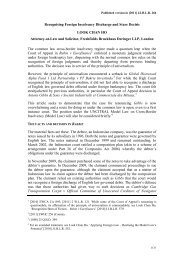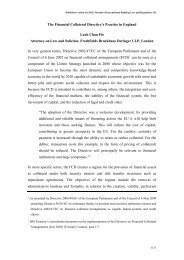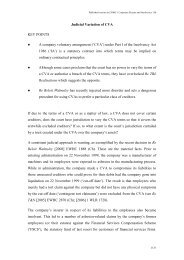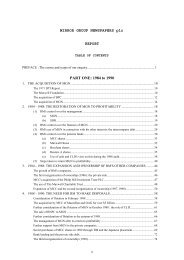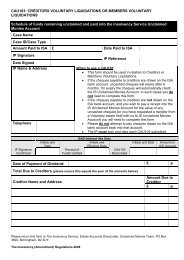Chapter 2 - The Insolvency Service
Chapter 2 - The Insolvency Service
Chapter 2 - The Insolvency Service
Create successful ePaper yourself
Turn your PDF publications into a flip-book with our unique Google optimized e-Paper software.
<strong>Chapter</strong> 2<br />
Flexible Working Patterns<br />
To support staff in effectively balancing work with outside<br />
commitments, we provide a number of alternative working<br />
arrangements. All staff have access to the flexible working<br />
hours scheme which enables them to vary their times of<br />
arrival and departure from work, vary the length and<br />
timing of their lunch break and take time off if they work<br />
extra hours. 14% of all staff work part-time, with<br />
representation being fairly evenly spread across<br />
administrative and middle management grades.<br />
Currently 13 members of staff (7 in 2004-05) spend their entire working week<br />
at home. <strong>The</strong> <strong>Service</strong> supports this working arrangement by providing the<br />
necessary IT, communication and office equipment. In addition 27 staff (18 in<br />
2004-05) have a compressed hours arrangement whereby they work full time<br />
hours over a 4-day week or 9-day fortnight.<br />
Flexible working, where staff spend part of their week working in the office<br />
and part of the week from home, was introduced in <strong>The</strong> <strong>Service</strong> in 2002. <strong>The</strong><br />
number of staff working in this way continues to grow with 90 staff<br />
participating in the scheme. Flex workers are provided with appropriate IT<br />
and telephone facilities to support their working arrangements. In addition<br />
<strong>The</strong> <strong>Service</strong> has also been able to support a number of requests for ad-hoc<br />
flexible working arrangements made under the Flexible Working Regulations<br />
2002.<br />
Employee Involvement<br />
<strong>The</strong> <strong>Service</strong> places great importance on effective communication with staff.<br />
This is achieved in a number of ways including:<br />
<br />
<br />
<br />
<br />
<br />
<br />
<br />
<br />
a Core Brief following the second bi-monthly Directing Board meetings<br />
which is cascaded to staff and discussed at monthly team meetings;<br />
a system of notices to staff, identified by subject and available on <strong>The</strong><br />
<strong>Service</strong>'s Intranet;<br />
Performance Agreements for individual staff members as an integral<br />
part of the business planning process;<br />
involvement of staff in the preparation of office/section business plans;<br />
circulation of key documents e.g. the Agency Annual Report, the<br />
Corporate Plan;<br />
a Leadership Group consisting of the senior management of <strong>The</strong><br />
<strong>Service</strong> which meets 4/5 times a year and which agrees key<br />
messages to be cascaded to staff following its meetings;<br />
a Communications Forum for HQ Managers and communication Focus<br />
Groups involving staff at all levels;<br />
briefing of all staff following <strong>The</strong> <strong>Insolvency</strong> <strong>Service</strong> annual<br />
conference;<br />
43


